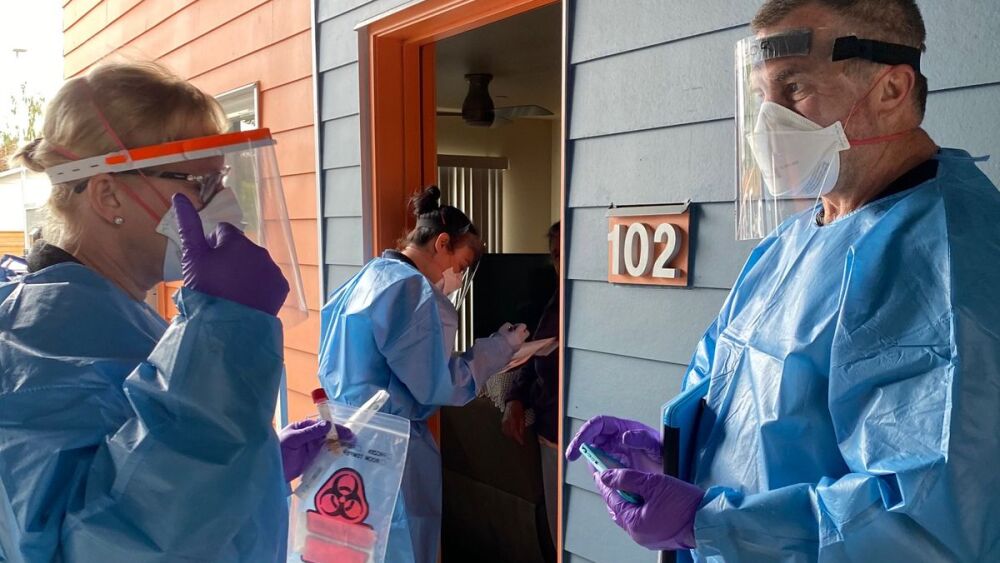The votes are in and counted, the President has signed the bill, but someone else has our cake and will now decide how many slices we get and how much of it we can eat.
President Biden signed the American Rescue Plan Act of 2021 on March 11, 2021. As has been widely reported, one of the many provisions within the 550-page law is the new CMS waiver authority that would provide reimbursement to ambulance services for treatment in place during the public health emergency. Specifically, this waiver would allow CMS to pay for ground ambulance services furnished in response to a 911 call (or equivalent in areas without 911) in cases where a patient was not transported but was instead treated in place in accordance with community-wide EMS protocols.
The genesis of this element of the act can be traced back to the sterling work done a collaboration of our national associations, including AAA, NAEMT, IAFC, IAFF and NVFC, who came together at the beginning of the pandemic to act as one voice for the good and benefit of all things EMS. One of the targets of their combined legislative focus was to gain reimbursement for doing the one thing that EMS generally does not earn money from; treatment in place (TIP), or more accurately, treating in lieu of transport (TILT).
The early sticking point occurred as CMS identified that it didn’t have statutory authority to waive the transport requirement for payment. In response, the assembled associations used the power of lobby to place this authority in the act and it was subsequently signed off by the POTUS. Matt Zavadsky, commenting on my recent podcast, noted, “To some extent, this is earth-shattering in that for the first time, CMS has been instructed by our elected officials in Congress to give EMS reimbursement for essentially treatment and no transport.”
Treatment in place reimbursement hurdles
So far so good, but we are not over the finish line just yet. The act essentially awarded CMS the authority to determine if a new public health emergency waiver authority can be issued, and therefore if payment can be made. In other words, they have the cake and will now determine how much of it we get to eat. The associations are now at work to get us over the next hurdle.
The small print in the act identified that EMS agencies must ensure that they have community-wide EMS protocols in place that describe when treatment in place (and no transport) should take place. The AAA is conducting a survey to collect and collate the answer to a key question. As the AAA noted, “CMS will likely want to understand the scope and the documentation of ground ambulance services provided during the pandemic when there was a community-wide EMS protocol in place that prohibited transporting certain patients.”
The key question in the survey:
“Did your organization experience restrictions on being able to transport certain patients to any approved Medicare destination during the pandemic that resulted in your company providing healthcare services to the patient but not transporting him/her?”
Armed with the necessary information, the task at hand is then to lobby, perhaps all contribute to a letter-writing call to action, and ask that CMS provide the waiver for both future and retrospective treatment where transport would be otherwise indicated, but protocols indicate this need not occur. As Zavadsky noted, “We know that this is a very narrow scope, if we weren’t having a pandemic, we would have transported those people. There is a pandemic, there were community protocols that said ‘don’t bring these people to the hospital;’ it’s a very limited focus, however, it allows us to demonstrate that treatment in place is safe, it improves patient experience and reduces expenses.”
A limited opportunity
The CMS waiver and its payments will probably not make EMS whole for the hard work and sacrifice it has delivered and endured in the last year, but it will acknowledge that the patient has been provided with an on-scene EMS medical solution by us, and not a transport to a location for someone else to fix. This recognition, in the short term, is probably worth more than the payments themselves. The value of TIP within the act was scored by the Congressional Budget Office with a value of $10M, in other words, a very limited benefit.
The long game here is to identify the good we have done and have it permanently installed, hopefully, turn it into a genie that can’t be pushed back into the bottle. But right now, with Xavier Becerra now sworn in as the 25th secretary of the Department of Health and Human Services, the pressure is on to get our TIP waiver through without delay, lest the state of emergency be concluded, which would effectively close the door on this opportunity.
EMS One-Stop with Rob Lawrence
Listen for more:
Zavadsky and Ludwig on Treatment in place hurdles: EMS One-Stop with Rob Lawrence
Bruce Evans on TIP legislation, EMS on the Hill
Read next
The gatekeepers: How EMS will save the U.S. healthcare system
Matt Zavadsky, MS-HSA, outlines the path ahead for EMS in the new normal, community paramedicine’s role, and his talks with CMS about treat-not-transport reimbursement














